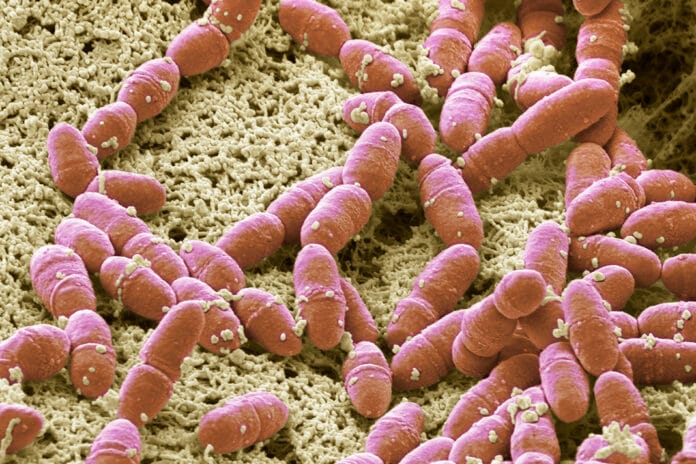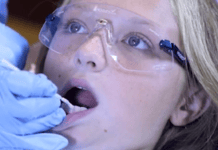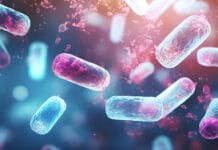A study by researchers from the University of Pennsylvania and the University of North Carolina at Chapel Hill in conjunction with Cedars-Sinai Medical Center and Tufts University has revealed surprising new players associated with the virulence of dental caries.1
For years, dental professionals have pointed to Streptococcus mutans, a bacterium that forms biofilm and produces acid, as the primary culprit and keystone pathogen behind dental caries. However, this new research, published in Nature Communications, suggests that others, such as S. sputigena, previously linked to periodontal disease and endodontic infections, can significantly boost the decay-causing power of S. mutans.1
S. sputigena was initially detected in the microbiome of the aerodigestive tract and has also been found in saliva. Beyond its previous link to periodontal disease and endodontic infections, it is emerging to have prognostic significance in cancer. The researchers’ findings “demonstrate that S. sputigena acts as a pathobiont outside its typical habitat to modulate biogeography (i.e., spatial structure), metabolic activity, and pathogenicity of supragingival biofilms in the context of a prevalent childhood disease.”1
The Study
The research team analyzed biofilm samples from 300 children aged 3-5 years, half of whom had caries. They used a range of advanced tests, including gene sequencing and microscopic imaging. The researchers identified 16 bacterial species associated with childhood caries. Of those, they focused on the previously unrecognized roles of pathogenesis in dental caries and the properties of L. wadei, P. salivae, and S. sputigena alone and combined with S. mutans.1
Results
The researchers found that “S. sputigena, L. wadei, and P. salivae, alongside the known S. mutans, display aciduric and acidogenic properties. All species can metabolize sucrose, the primary disease-associated dietary sugar, produce acids in the glycolytic assay, and survive in the resulting acidic pH. While the metabolic activity is driven by S. mutans, we unexpectedly found that the addition of S. sputigena results in faster acid production and increased aciduricity, significantly higher than S. mutans alone. This suggests a possible cooperative relationship between S. mutans and S. sputigena that favors the formation of pathogenic biofilms.”1
While S. sputigena doesn’t cause caries on its own, it can increase the severity of dental caries when partnered, or “co-infected,” with S. mutans. Further, when grown together with S. mutans, L. wadei, P. salivae, and S. sputigena, could co-colonize the surface of saliva-coated hydroxyapatite discs, forming structured and distinct mixed-species biofilm within 24 hours. However, when grown alone, these new species could not efficiently colonize the surface and only appeared as single cells (L. wadei and P. salivae) or small bacterial clusters (S. sputigena), further supporting inter-species interaction between these bacteria species and S. mutans.1
The mechanism by which this co-infection increases virulence is not fully understood. However, it is suggested that the glucans produced by S. mutans play a role in the process. S. sputigena, which can move across surfaces, gets trapped by these glucans leading to immobility. Once trapped, S. sputigena multiply rapidly, forming honeycomb-like spatial biofilm structures that encapsulate and protect S. mutans.1
One of the most significant discoveries in this study is the symbiotic relationship between S. sputigena and S. mutans, where a mobile bacterium, usually found subgingivally, becomes trapped in an exopolymeric matrix created by another species residing supragingival. This novel spatial biofilm structure enhances virulence, leading to an unexpected cooperative interaction between the two species.1
In Closing
These findings suggest that disrupting these protective S. sputigena spatial biofilm structures could be a new approach to preventing caries. This could be achieved through specific enzymes or more effective mechanical removal techniques.1
The researchers are planning to investigate further how this oxygen-averse bacterium ends up on the oxygen-rich surface of the tooth. This unusual migration of a bacterium from one environment to another, resulting in the formation of these remarkable spatial biofilm structures, could be of broad interest to microbiologists.1
As dental hygienists, understanding these complex microbial interactions can help us provide better care and home care instruction to our patients, potentially leading to more effective strategies for preventing caries.
Before you leave, check out the Today’s RDH self-study CE courses. All courses are peer-reviewed and non-sponsored to focus solely on pure education. Click here now.
Listen to the Today’s RDH Dental Hygiene Podcast Below:
Reference
- Cho, H., Ren, Z., Divaris, K., et al. Selenomonas sputigena Acts as a Pathobiont Mediating Spatial Structure and Biofilm Virulence in Early Childhood Caries. Nature Communications. 2023; 14: 2919. DOI: 10.1038/s41467-023-38346-3











